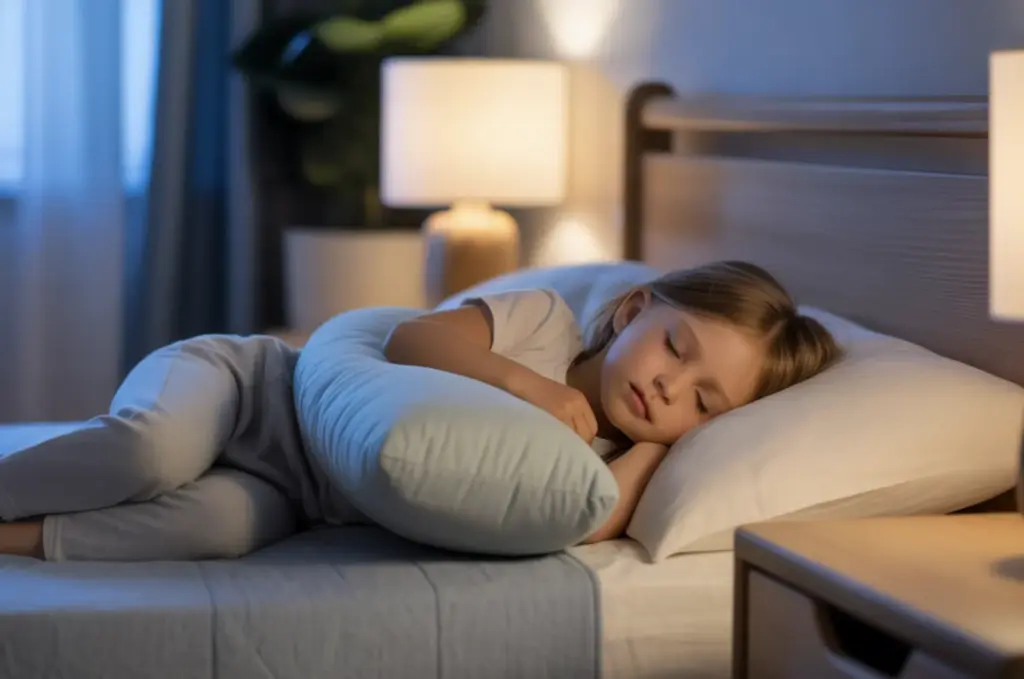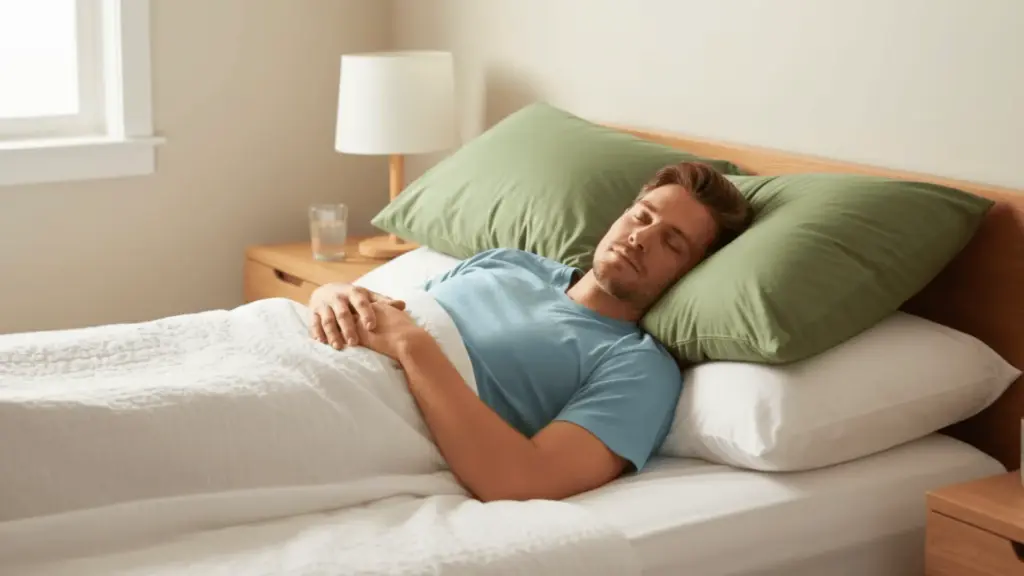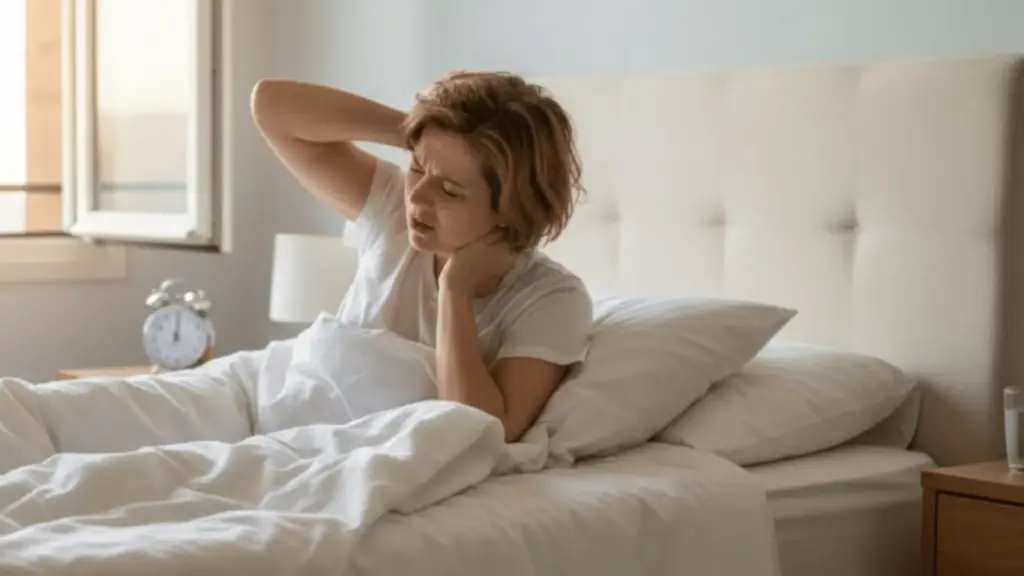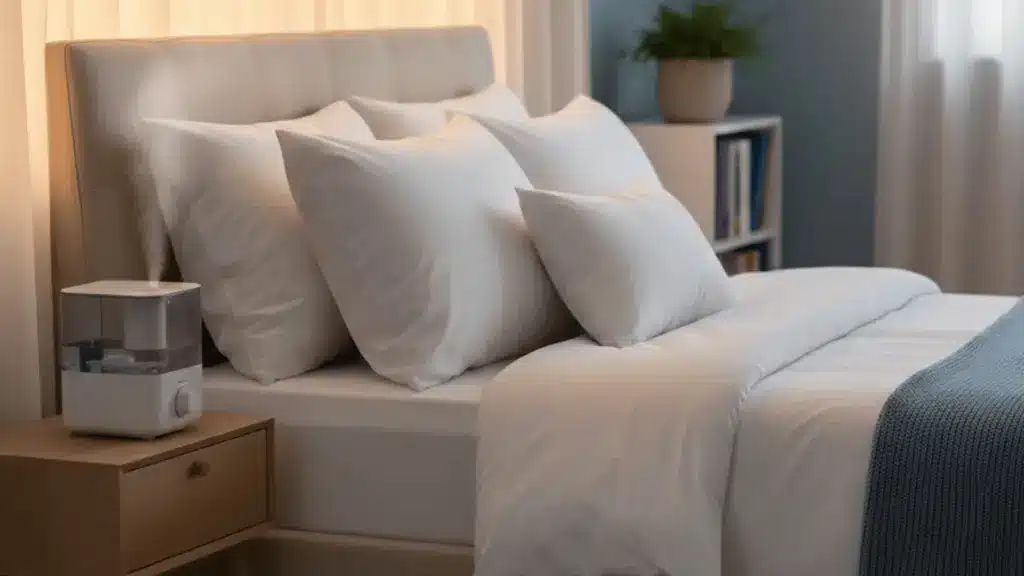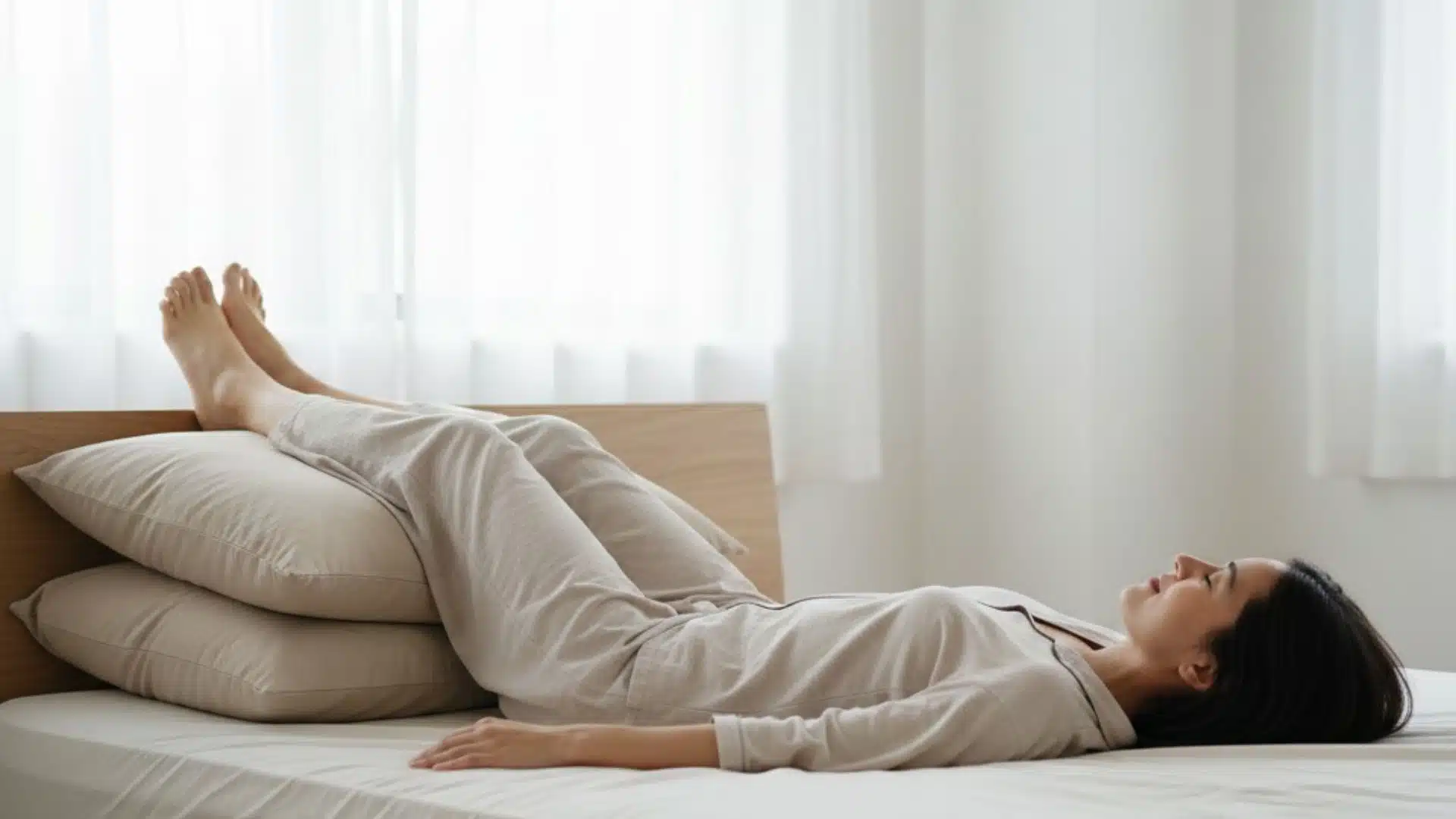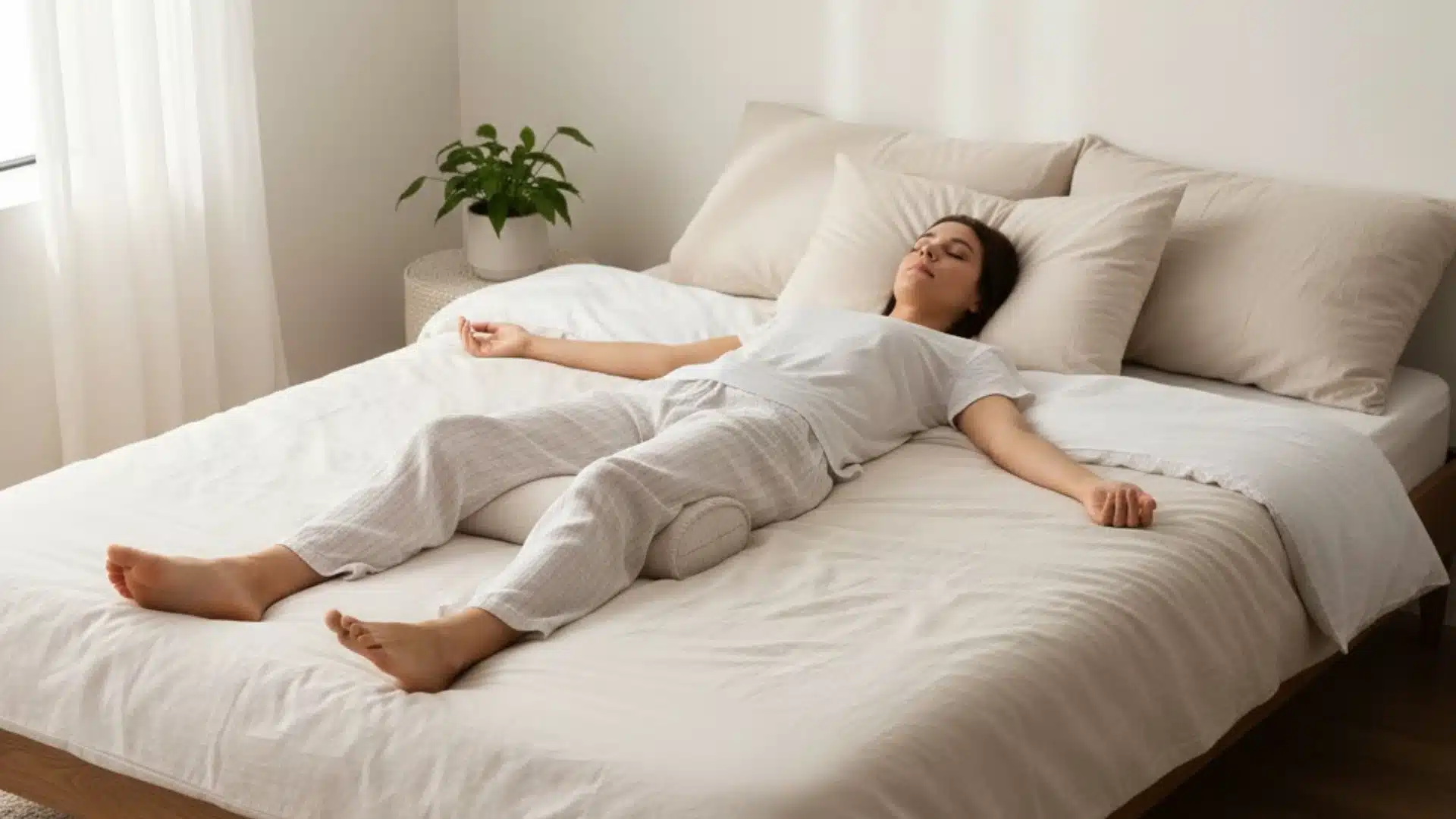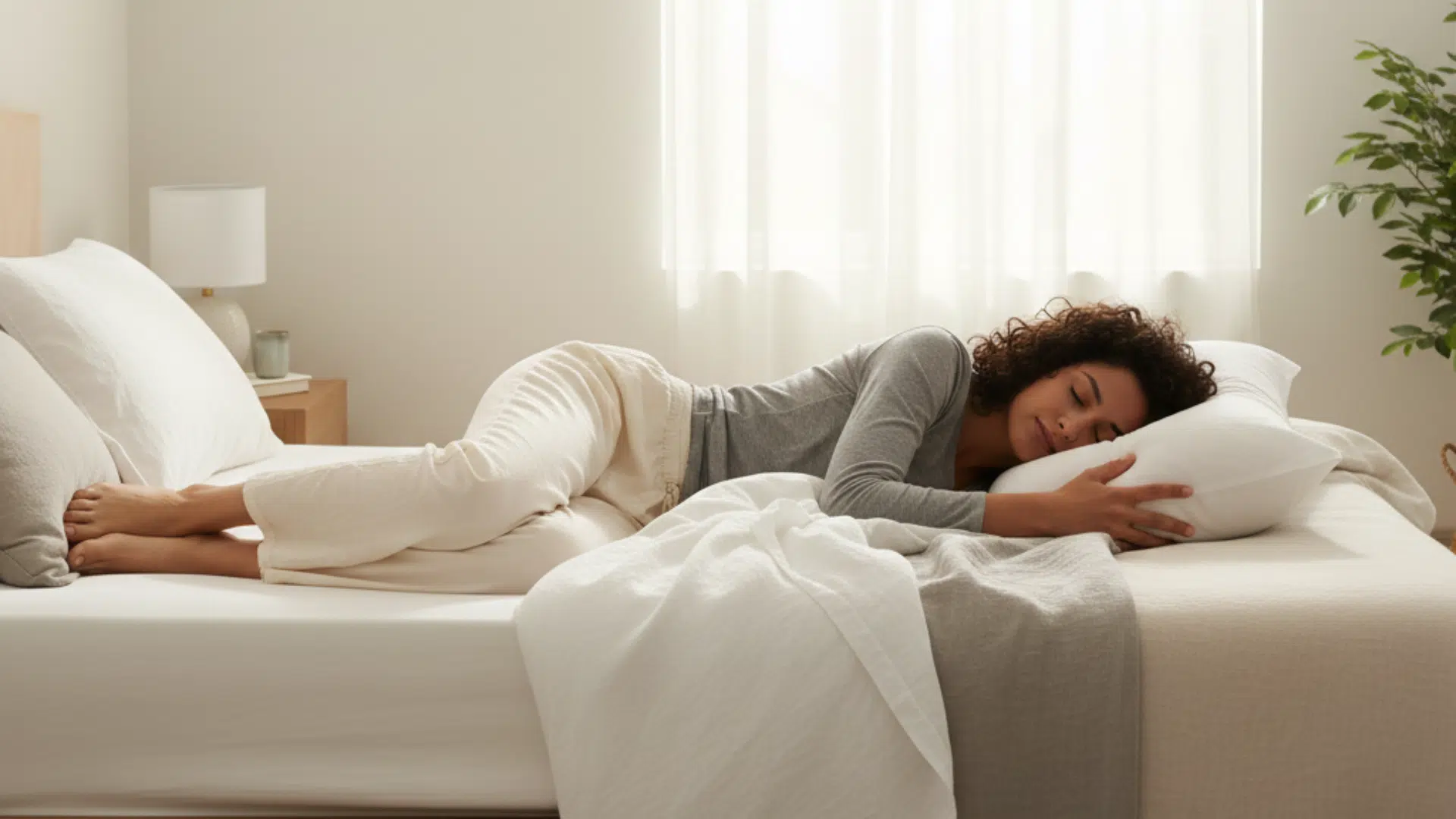I once read something that stuck with me. It said a child’s sleeping position can either help or worsen sleep apnea.
That thought pulled me into hours of reading, checking studies, and looking for simple answers. What I found wasn’t just interesting, it was useful.
If you’re trying to find the best sleeping position for a child with sleep apnea, you’re already a step ahead. The way your child sleeps can affect how well they breathe through the night.
In this blog, you’ll get clear, simple advice. You’ll also learn which sleep positions can help and which ones to skip. There’s more to this than it seems, and by the end, you might look at sleep a little differently.
Understanding Sleep Apnea in Children
Sleep apnea in children is when breathing starts and stops while they sleep. There are two main types:
- Obstructive sleep apnea happens when something blocks the airway during sleep, making it hard to breathe.
- Central sleep apnea is less common and happens when the brain doesn’t send steady signals to keep breathing going.
Some clear signs help tell if a child might have sleep apnea. These include loud snoring, breathing through the mouth, or having pauses in breathing at night.
A child might also move around a lot while sleeping or wake up feeling tired. During the day, they might seem cranky, have trouble focusing, or fall asleep easily.
It’s important to catch sleep apnea early. If it’s not treated, it can affect how a child grows, learns, and behaves. Good sleep matters for healthy brain development, so spotting the signs early can make a big difference.
Best Sleeping Positions for a Child with Sleep Apnea
Choosing the best sleeping position for a child with sleep apnea can improve your child’s sleep and breathing.
The right position can help keep their airway open and prevent blocked breathing. Below are sleep positions along with simple ways to make them safe and more effective:
Side Sleeping
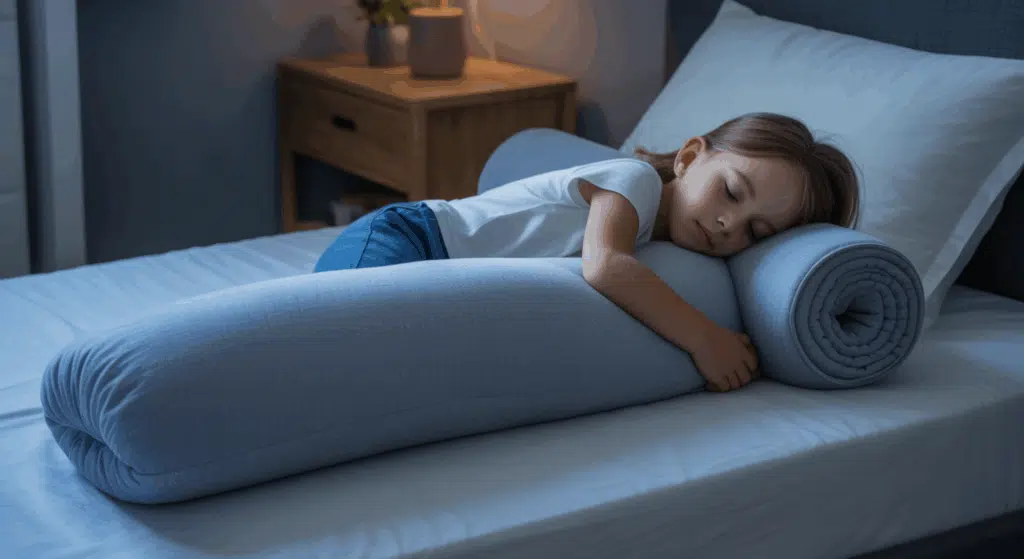
Side sleeping is often the top choice for children with sleep apnea. When a child sleeps on their side, their tongue and soft tissues are less likely to block the throat.
This helps them breathe more freely through the night. It also reduces snoring and helps them get deeper rest.
- Use a full-length body pillow or place a rolled towel behind their back.
- You can try a child-friendly side-sleeping cushion for extra support.
Sewing a small pillow or soft item into the back of your child’s pajamas can also stop them from rolling over. This method is safe for toddlers, older kids, and even teens.
Over time, side sleeping can become a habit, especially with gentle reminders and the right tools in place.
Semi-Upright or Elevated Sleeping
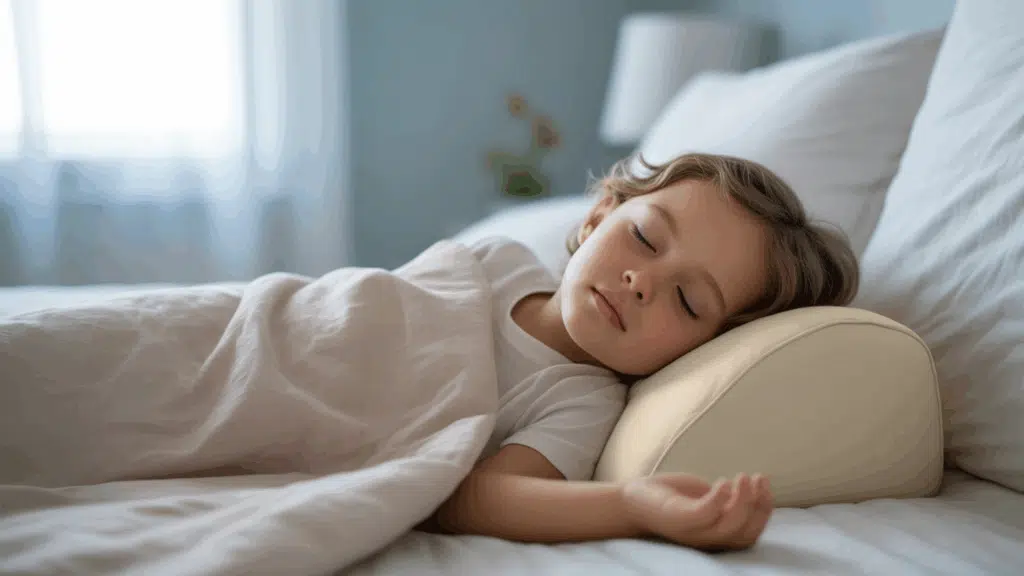
Sleeping with the upper body raised can help many children breathe better. A 30–45° angle helps keep the airway open and can stop the tongue from falling backward.
This position also helps reduce snoring, especially in kids with nasal issues or allergies.
- Use a wedge pillow that raises your child’s head and shoulders.
- An adjustable bed or a safely reclined chair can also work well.
Be sure the spine stays straight, and the neck is supported. If the body bends too much, it can lead to aches or stiffness in the morning.
A thin pillow under the neck and a flat surface behind the back can help keep posture in line. This setup works best when tested slowly and adjusted for comfort.
Stomach (Prone) Sleeping

Stomach sleeping isn’t usually the first option, but in some cases, it may help. For older children, lying on the stomach can stop the tongue from falling back and blocking airflow.
It may reduce sleep apnea signs if side or elevated positions don’t help enough.
- Always talk to your child’s doctor before trying stomach sleeping.
- Use a flat pillow or no pillow at all to avoid neck strain.
This position is not safe for babies or toddlers, as it raises the risk of breathing problems. If your doctor says it’s okay to try, make sure the mattress is firm and the sleeping space is clear.
You can also place a small cushion under the chest or hips for support. Start slow and watch how your child responds.
Sleeping Positions to Avoid
Back sleeping can make sleep apnea worse in older children. When a child lies flat on their back, the tongue and soft tissues in the throat can fall backward. This can block the airway and cause pauses in breathing.
Many kids with sleep apnea snore more or breathe less deeply when sleeping on their backs.
But it’s important to know this advice is not for babies under one year old. Infants should always sleep on their backs to lower the risk of SIDS (Sudden Infant Death Syndrome). This rule is based on strong safety research.
So while back sleeping is best for babies, it can be a problem for older children with sleep apnea.
Once a child is over one year old and has signs of apnea, side or slightly raised sleeping positions are often better. Always follow age-specific sleep safety advice.
Sleeping Position Tips Based on Age
Sleep needs change as children grow, and so do the best sleep positions for helping with apnea. Here’s a simple guide by age to help you know what works best and why:
Infants (Under 12 Months)
Babies under one year should always sleep on their backs. This is the safest position to reduce the risk of SIDS.
If an infant shows signs of sleep apnea, changes in sleeping position are not the solution. In these cases, doctors will manage apnea with medical tools or close monitoring.
Never use pillows, wedges, or side-sleeping supports for babies. Keeping the sleep space flat, empty, and firm is the safest option. Focus on medical care rather than position.
Toddlers (1–3 Years)
At this age, children can safely start side sleeping with light support.
This can help if they’ve been diagnosed with sleep apnea.
- Use body pillows or soft barriers to keep them in place.
- Choose firm mattresses and avoid heavy blankets or stuffed animals.
Make the sleep area calm and safe. If they roll onto their back, gently shift them during the night. It may take time, but toddlers can adjust to a new sleep position with a little help.
School-Age Children (4–10 Years)
Kids in this group often show stronger signs of sleep apnea, like loud snoring or trouble staying asleep.
Side sleeping or a slightly raised position can really help keep their airway open.
- Use wedge pillows to raise the upper body at a light angle.
- Reclining chairs (used safely) can also improve sleep posture.
This is a great age to start good sleep habits. A steady bedtime and calm routine can help sleep come easier. If symptoms continue, work closely with a doctor for added support.
Teenagers (11+ Years)
Teens may need a mix of support to manage sleep apnea.
Side sleeping still works well, but now doctors may suggest other treatments too.
- CPAP machines or oral sleep devices can be helpful if prescribed.
- Stick to good habits like regular sleep times and less screen time before bed.
Teenagers often stay up late or sleep in on weekends, which can hurt sleep quality. Keeping things steady makes a big difference.
Talk openly with your teen about sleep, especially if they’re using special tools like CPAP. Good routines plus the right position can help them sleep more deeply and wake up with more energy.
Monitoring Sleep Quality at Home
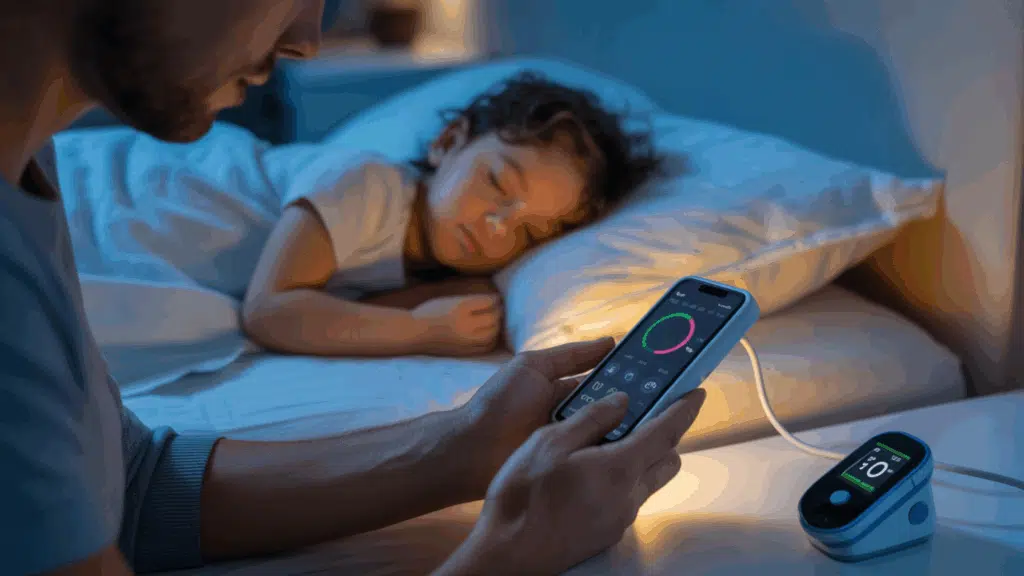
Once you’ve made changes to your child’s sleeping position, it’s important to watch for signs of progress.
If the new position is helping, you may notice less snoring, fewer pauses in breathing, and a more restful night overall.
Your child might wake up less often and seem more alert during the day.
To help track changes, you can use tools like:
- Sleep apps that record sounds during the night
- Audio or video baby monitors for overnight observation
- Oxygen trackers (pulse oximeters) that check breathing and oxygen levels
These tools can give clues, but they don’t replace medical tests. If snoring stays loud, if you still notice choking or breathing stops, or if your child is still tired during the day, it’s time to see a doctor.
A sleep study might be needed to get clear answers and guide the next steps in treatment.
When to See a Doctor
If your child snores loudly most nights, gasps for air, or has long pauses in breathing while asleep, it’s time to speak with a doctor.
Other warning signs include daytime sleepiness, trouble focusing, mood swings, or slower growth. If sleep position changes and other home tips don’t help, don’t wait—early treatment can make a big difference.
Here’s what to share with the doctor:
- How often does your child snores or struggle to breathe
- Any choking or gasping sounds at night
- Changes in mood, energy, or school performance
- Whether you’ve tried sleep position changes or other home steps
- Family history of sleep problems
- Any videos or notes you’ve taken during sleep
This information helps your doctor decide what tests or treatments are needed next.
Combining Sleeping Position with Other Treatment Options
Changing sleep position is helpful, but it often works best when paired with other treatments. For children using a CPAP machine, side or elevated sleeping can make it easier to breathe and keep the airway open.
If a child has had their tonsils or adenoids removed, sleeping on their side may still help reduce leftover snoring or breathing trouble.
For kids working on weight management, side sleeping supports better airflow while healthier habits take effect.
Other helpful changes include:
- Keeping a regular bedtime
- Helping your child maintain a healthy weight
- Using nasal rinses or sprays to clear blocked noses
It’s important to remember that every child is different. The best results come from working with a pediatric ENT or sleep specialist.
They can create a plan that fits your child’s needs and adjust it as needed. Position changes are just one part of the bigger picture.
Conclusion
Finding the best sleeping position for a child with sleep apnea taught me how much small changes can help. I didn’t realize how much sleep positions could affect breathing until I looked into it more closely.
Learning about side sleeping, slight elevation, and the right tools gave me more confidence in what to try at home.
Now it’s your turn to think about what could work for your child. Use what you’ve learned to make bedtime easier and safer.
Watch how your child sleeps and how they feel during the day. Keep it simple and don’t ignore the signs that something needs more attention.
If you want clearer, helpful advice like this, check out the rest of the blogs on the website.
There’s more to learn, and each step brings you closer to better nights!


